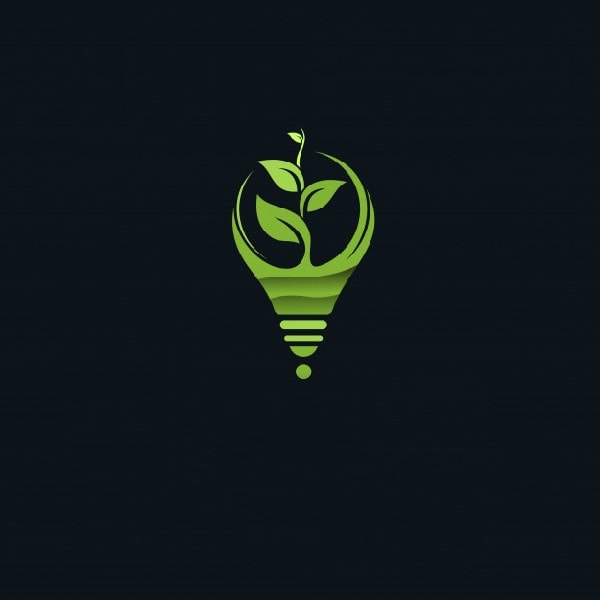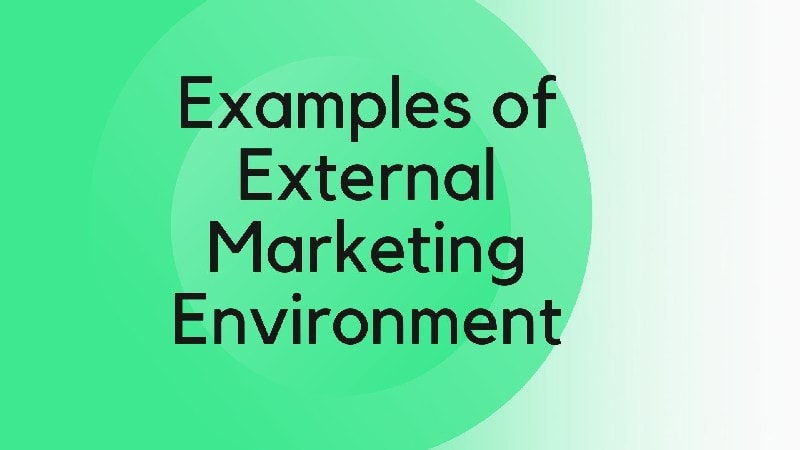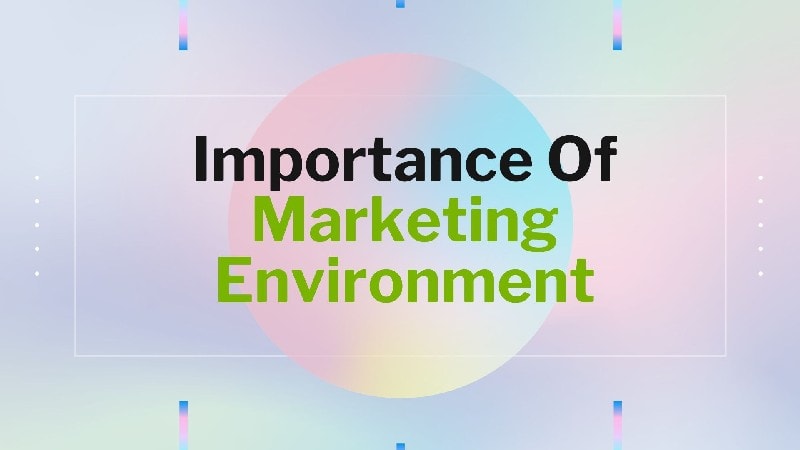Various environmental factors affect the way a business is operated. These environmental factors can be divided into two broad categories, such as the internal environment and the external environment. A business is required to adapt to these marketing environments to stay profitable and ahead in the competition. In this article, you will learn about different types of marketing environments and various components of the marketing environment.
Table of Contents
Definition
The marketing environment can be defined as a combination of both internal environmental factors and external environmental factors. These marketing environments surround a business and influence the operations of the business.
What is the marketing environment?
A marketing environment is a combination of internal and external environmental forces and factors that influences the business operation of a business and its ability to serve its customers. It is essential to know both internal as well as external environmental factors. Therefore, enterprises keep checking on them to do their business without any legal trouble and to generate maximum profit.
The internal marketing environment consists of factors like material, machines, workers, money, etc. All of these components are necessary to run a business successfully. For example, if the raw material is not available on time and in sufficient quantity, then the work of production will become slow, and the company will not be able to fulfill the demand of the product in the market.
On the other hand, the external marketing environment can be divided into two categories, such as macro external marketing environment and micro external marketing environment. The microenvironment is closely related to the business and constitutes all external business activities such as distribution and promotion of products of the company.
The macro-environmental components affect all the companies serving in a single industry similarly. For example, changes in the laws and rules related to production or doing business will apply to all companies likely. In the next section, you will learn about all the internal as well as external components of an organization.
Components of the marketing environment

There are broadly two components of the marketing environment, such as the internal environment and external environment. Different types of parts of the marketing environment are categorized under these two broad categories.
The internal environment of a business can be controlled, but there is very little control of a business in the external marketing environment. Let us learn about both components one by one.
1. Internal environment
The internal environment is formed of all the internal factors and forces of an organization. The internal environment of an organization is within the control of the marketer, and he can change or modify the environment as per the demand in the market and requirement of the business.
The following are the five factors that form the internal environment of an organization. These factors are also referred to as five Ms of a business.
- Money
- Men
- Markets
- Materials
- Machinery
All the components of the internal environment are as important as that of the components of an external environment. However, the internal environment factors are changed according to the change in the external marketing components. For example, an organization is required to upgrade its technology if new technology in the market is introduced.
The internal environment of an organization also includes the marketing department, the sales department, the human resource department, and the manufacturing department.
2. External Marketing environment
The external marketing environment consists of all the external marketing factors that exist outside the organization, and the marketer has little or no control over the external marketing environment factors.
The external marketing environment can be divided into two categories, such as microenvironment and the macro environment.
Let us learn about both macro and micro environments one by one.
A. Microenvironment
The microenvironment of a business consists of all the factors and forces that are directly associated with the company. The micro components of the external environment are also known as task environments.
The following are the various components of the micro external environment.
1. Suppliers
Suppliers are an essential part of every organization. Suppliers supplies material and all other types of resources required for the production of products. A company can run its business successfully only if its suppliers supply material of good quality and on time.
2. Market intermediaries
Market intermediaries are the intermediary parties that help a business to distribute its products in the market. The market intermediaries can be wholesalers, retailers, and distributors. All of these market intermediaries are an essential part of the business as they are the face of the company in the market and represent the products of the company in the market.
3. Partners
Business partners are the business entities that conduct business with the organization. For example, advertising agencies, banking and insurance companies, market research organization s, brokers, and transportation companies, etc. A company is required to partner with several other companies to run a successful business.
4. Customers
Customers are the most crucial component of the business. Customers are the target audience of the product, and the preference of customers influences all the marketing and business efforts of a company.
5. Public
The public is people other than the target audience of the organization. The public plays a vital role in the success of the business as it can build or destroy the image of a company in the market. The public has the power to influence the purchasing decision of the target audience. Especially in the times of the internet, the ability to control the public has increased as they can share their views about your products and services on the internet freely.
6. Competitors
The last but not least component of the microenvironment is the competitors of a business. The competitors are the other businesses that sell similar products as your products or are part of the same strategic group in the industry.
B. Macro Environment
Macro components of a marketing environment consist of all external forces and factors that impact the whole industry rather than just changing an organization directly. Therefore, the macro marketing environment is also referred to as a large environment.
The following are the six components of the macro environment. Let us learn about them one by one.
1. Technological environment
Technology is one of the elements that have great potential to influence the business of an organization. It is dynamic, as it changes rapidly. Technology provides several threats and opportunities to the business environment.
The technological environment consists of research and development in technology, innovation, inducement of technology, and technical alternatives, etc.
2. Demographic environment
The demographic environment component of the macro marketing environment consists of people that form a market. The population of the demographic environment can be characterized based on various factors such as age, gender, density, size, location, race, and occupation, etc.
The demographic environment is a crucial component for business as the company design and builds its products based on the characteristics of the demographic environment.
3. Social-cultural environment
The social-cultural component of a macro environment is formed using values, lifestyle, culture, beliefs, and prejudices of the target audience of a business. The social-cultural environment varies from one region to another region.
People living in one area might prefer a different type of product than the preference of the product of the people of any other region. Businesses are required to have in-depth knowledge of the social-cultural environment to design a product or service that is preferred by most people.
4. Economic environment
The economic environment component is a type of component that influences all industries. The economic environment affects the purchasing power and spending patterns of the buyers.
The following are the different factors that form an economic environment.
- Interest Rates.
- Gross Domestic Products (GDP).
- Gross National Product (GNP).
- Inflation.
- Subsidies.
- Income distribution.
- Government funding.
- Other significant economic variables.
5. Political-legal environment:
The political-legal environment consists of laws and policies of a country. In addition to rules and procedures, the political-legal environment also includes agencies and pressure groups. All of these political entities impact the working capacity of the industry in society.
6. Physical environment:
The last component of the macro environment is the physical environment in which an organization exists. The following are the components of the physical environment.
- Climate condition
- Environmental change.
- Availability of the raw material.
- Natural resources like water.
- pollution.
Examples of the marketing environment
Examples of the internal marketing environment
The best example of an internal marketing environment is the office culture of the organization. Your office culture consists of the values, beliefs, and attitudes of your employees. All of these factors determine how the employees of your organization will behave. For example, in an organization where employees are encouraged to perform in a team and support the members of the group are more likely to perform better than the organization where employees compete with one another.
Moreover, employees are likely to perform better in a positive internal marketing environment rather than an environment where employees are nagged continuously and pressured to perform well. Google is one of the best companies that provide a positive and very healthy internal environment to its employees. Because of this, Google is now one of the leading companies in the industry.
Examples of the external marketing environment

The external marketing environment of an organization is formed of micro and macro environment. The microenvironment consists of suppliers, market intermediaries, partners, customers, public, and competitors, etc. for example, suppliers of an organization alter the business environment of an organization to a certain extent. If suppliers supply good quality material and supply that material on time, then the organization can produce the right quality products and can fulfill the demand in the market efficiently.
Another vital component of the micro marketing environment is the market intermediaries. The market intermediaries of your business play an essential role in the success of your business. They are the face of your company. They interact with your customers daily and understand your customers and also your product. Let us take the example of a retailer. A retailer sells products from different companies in the market. It is in the hands of a retailer to decide whether to promote your product or not.
The sales of your products will significantly depend on the people who represent you in the market. Therefore, it is necessary to provide proper incentives to your representatives and provide a good margin to them on your products so that they promote your products to their customers rather than promoting the products of your competitors.
On the other hand, a macro marketing environment does not affect an organization directly but affects the whole industry. An organization is required to perform its business operations according to the macro-environment factors. The examples of the macro-environment are demographic environment, social-cultural environment, economic environment, political-legal environment, physical environment, and technological environment, etc.
The business operations of an organization are controlled by the laws and policies decided by the government. In addition to this, the technological environment influences the business environment more than any other macro-environment factor. A business is required to upgrade the technology that it uses for business operations from time to time in order to stay ahead in the competition.
The technological environment has both advantages and disadvantages for an organization as an organization is always required to think of innovation to compete with its competitors. On the other hand, it is also costly for an organization to update its technology regularly.
Importance of marketing environment

The marketing environment holds great importance when it comes to conducting business successfully. Businesses of all sizes, whether small or large or required to do their business within the marketing environment.
The existence of the company, its profits, and its losses largely depends on the internal as well as the external environment around it. Therefore, it becomes essential for a marketer to understand and study the marketing environment thoroughly to generate profits and stay in business for a more extended period.
Let us understand why the understanding and knowledge of the marketing environment is necessary to run a successful business.
1. To learn about your competitors:
A business needs to learn about its competitors to stay ahead in the competition. Different companies fight for a single opportunity in a niche market using different strategies.
A deeper understanding of the marketing environment helps a marketer to learn about the business strategies and plans of their competitors. Having this knowledge helps the marketers to understand the policy of their competitors and plan their business strategies accordingly.
2. To learn about your customers:
Customers are an essential part of a business. All the business activities of a company are focused on serving its customers better. Therefore, a company gives great importance to learn about their customers and their changing preferences to serve them better and to have a long relationship with them. The marketing environment helps the marketer to understand the customers and their preferences.
For example, when there is a slowdown in the economy and inflation is on the surge. At such times, people either prefer to spend less or cease their spending to save money.
Therefore, people look for goods and services at lower prices. Consequently, a company must either introduce new products with lower prices or sell their products at discounted prices so that they can still make sales when there is an economic slowdown.
3. Necessary for future planning
A business is required to plan to meet the demand of the market and produce as per the latest trends in the market. It is essential to learn about the internal and external environment to plan efficiently.
4. To make most out of the latest trends
Trends change rapidly, and the change is rapid in fashion and other similar industries. Companies that are part of such industries are required to keep a check on the changing trends. To do this, they learn about every aspect of the marketing environment so that they can prepare a foolproof plan for the future.
5. To learn about all the threats and opportunities related to business
Understanding the marketing environment is necessary to learn about the risks and opportunities associated with the company. The marketer can take advantage of being a first-mover if they know the opportunities related to the business. Moreover, a business must learn about the threat associated with the company to take precautions to stay safe.
Ever wondered how the marketing environment impacts your business?
Tip: Regularly analyze both your internal and external marketing environments to stay ahead of market trends. This proactive approach can help your business adapt quickly to changes like new regulations or shifts in consumer behavior, ensuring long-term success.
Tip: Invest in understanding technological advancements relevant to your industry. By embracing innovations such as digital marketing tools or automation, you can enhance operational efficiency and gain a competitive edge in the market.
Liked this post? Check out the complete series on Marketing
Thax
Nice
It was the best fact owsome
Marketing sales for good and services.
best article i’ve read in a long time.
Clearly explained thank you
BEST ARTICLE
omg it’s full with knowledge. thank you very much